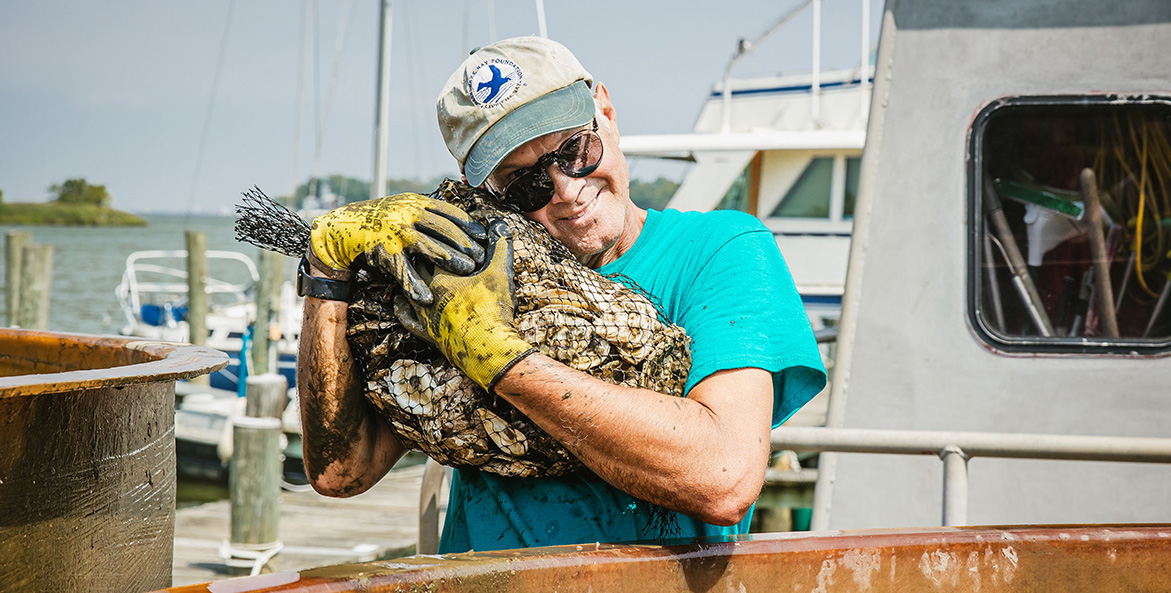Oysters are the bedrock of the Chesapeake Bay.
For those who don’t enjoy eating oysters, you might wonder what all the fuss is about. But trust us, they’re worth the hype. Oysters provide critical habitat for hundreds of species and have the miraculous ability to filter water and improve Bay health just by existing.
Oysters used to flourish in abundance in Bay waters. Sailors in the 1600s detailed the challenges of navigating mountains of oyster reefs during Chesapeake Bay explorations. Today, the view is much different. Decades of overharvesting, pollution, and disease have left oysters sparse and vulnerable in the Bay and its tributaries.
However, after 10 years of strategic, large-scale oyster restoration spearheaded by the 2014 Chesapeake Bay Agreement, it is safe to say oyster restoration has been one of our most successful efforts to date. When the agreement was made, 10 Bay tributaries were targeted to be fully restored for oyster habitat, with one additional tributary added later. That model has been immensely successful, and in its 2024 Hope on the Half Shell report, CBF recommended targeting 20 additional tributaries for oyster restoration beyond 2025. Additionally, the Chesapeake Oyster Alliance—of which CBF is a founding partner—and its network of nonprofit, industry, and state partners have committed to adding 10 billion oysters to the Bay by 2025.
But what does oyster restoration actually look like?
There are many ways to support oysters in the Bay. Volunteers throughout the watershed support them through oyster gardening (or growing baby oysters), building reef balls, recycling oyster shells, and more. These are all important steps in a much larger process.
This past year, CBF and our partners added millions of baby oysters into Chesapeake Bay waters. Take a look into their journey below. You may be surprised the lengths we’ll go to, all for an oyster.
Why Recycle Oyster Shells?
What comes first, the larvae or the shell? Oyster restoration is extremely cyclical. That’s what makes it so sustainable, but also makes it hard to tell exactly where the process begins. Let’s start with oyster shells, and the importance of recycling them.
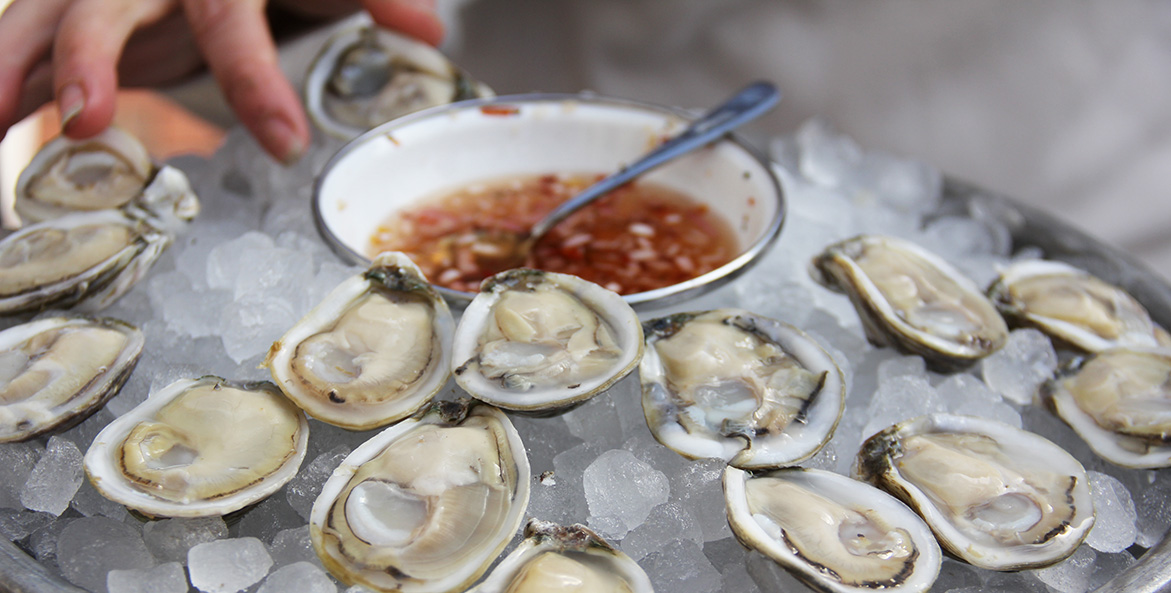
Restaurants throughout the region participate in Chesapeake Bay oyster shell recycling programs. Used shells can also be dropped off at a variety of shell recycling collection locations.
Kenny Fletcher/CBF Staff
Although it might seem counterintuitive, eating oysters can actually help grow the oyster population. In fact, recycled oyster shells are a critical part of the oyster restoration process. On average, ten baby oysters, called spat, latch to and grow on a single recycled oyster shell. That means every oyster you eat can create habitat for 20 more oysters in the Bay.
Oysters are most vulnerable during their first few weeks of life, and oyster larvae need a hard surface, known as substrate, to latch onto for survival. In the wild, larvae will naturally latch on to other oysters, which gives them that “clump” effect. So, what better substrate to use than oyster shells themselves?
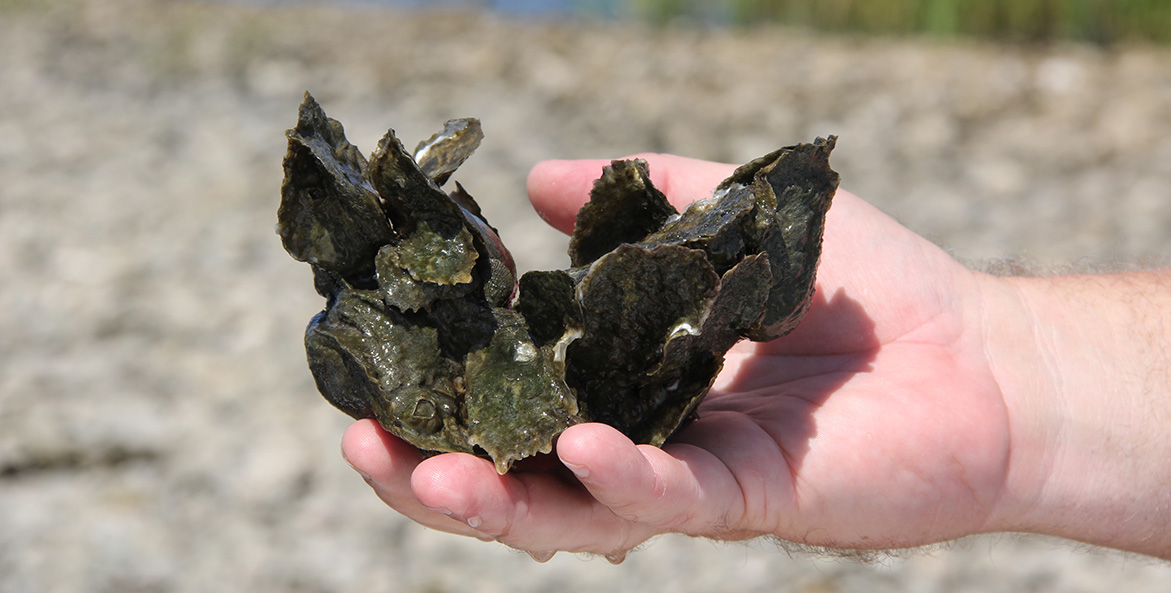
A "clump" of oysters.
Kenny Fletcher/CBF Staff
CBF collects millions of recycled oyster shells every year. We then set those oyster shells with larvae, which we get from a hatchery. Once the larvae have permanently attached to a substrate, it is called a “spat.” We distribute some of that “spat-on-shell" to an extensive network of volunteer oyster gardeners. Oyster gardeners use cages to hang their oysters off docks, keeping them elevated from the Bay’s muddy bottom. Some oyster gardeners do this at their waterfront homes. Others can participate at one of our public oyster gardening locations.
“They’re my little oyster babies,” said CBF oyster gardener volunteer, Susan Benac, in an NBC4 interview. “My job is to keep them in this environment and let them grow.”
Oyster gardening and shell recycling are some of the most hands-on ways the public can participate in oyster restoration.
Home Is Where the Habitat Is
Another important type of substrate that oysters can latch onto are called reef balls. We work with volunteers year-round to build concrete reef ball structures, which mimic the 3-dimensional relief of a natural oyster reef, and create exceptional habitat for many other aquatic species.
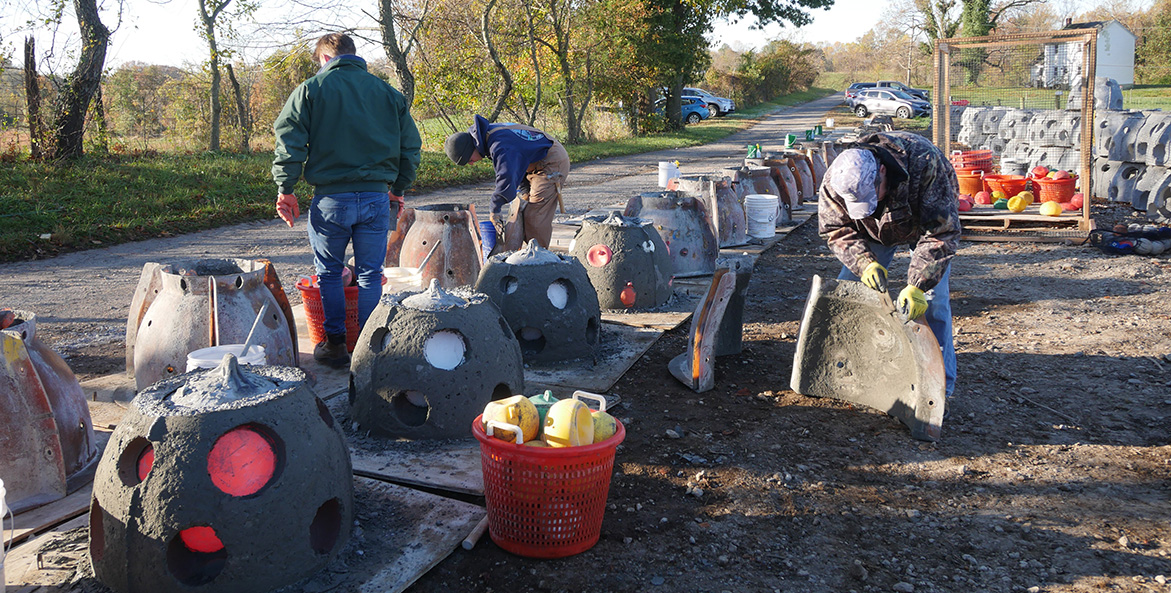
CBF volunteers build hundreds of reef balls in November 2023. Completed reef balls can be seen stacked on the right.
Valerie Keefer/CBF Staff
Like oyster gardening cages, reef balls keep vulnerable young oysters elevated, rather than letting them sink and drown in the Bay’s sediment. They become like condos for oysters and spark growth.
In 2023 and 2024, we and our partners at the Coastal Conservation Association Maryland built 600 reef balls, which were eventually set with oyster spat and deployed into the St. Mary’s River oyster sanctuary in southern Maryland. But before we could release the spat into the wild, they had to be carefully prepared and set.
What Happens at CBF’s Maryland Oyster Restoration Center?
Imagine childcare for millions of babies . . . Oysters are at their absolute most vulnerable during the beginning of life. Conditions need to be perfect for them to latch to substrate and grow.
One way CBF does this is by caring for the spat in tanks during their first one to two weeks of life. Our oyster restoration center in Shady Side is home to five large setting tanks that we can fill with substrate like recycled shell or reef balls and support oyster spat before they are deployed into a sanctuary reef. But conditions must be just right.
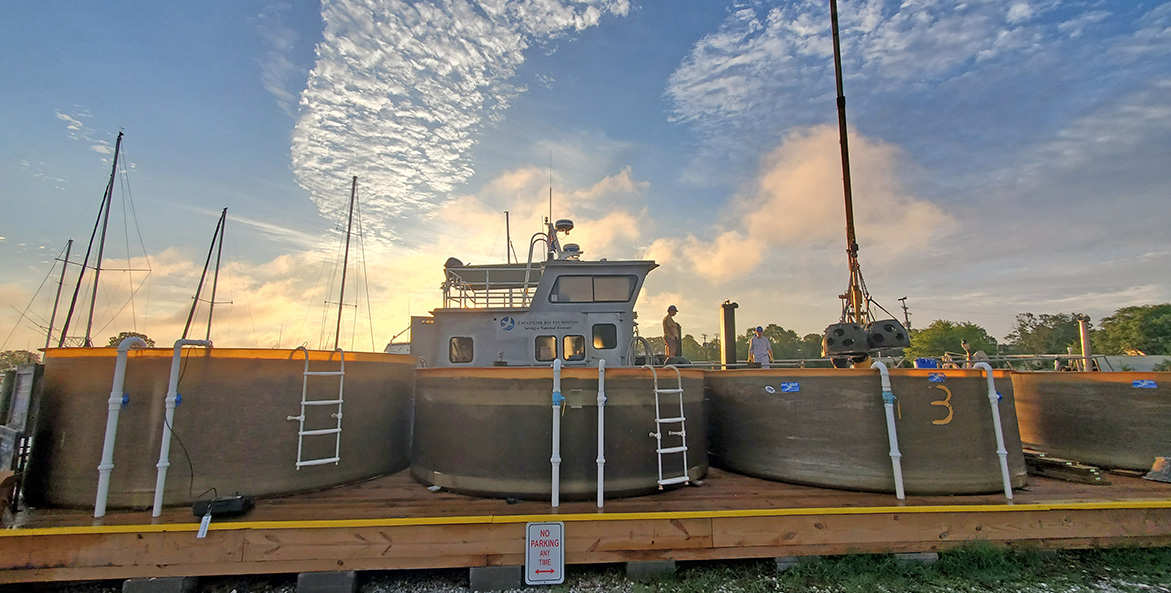
Five large tanks at CBF's Maryland Oyster Restoration Center are used to set oyster larvae, or spat, on substrate, which will be deposited on a sanctuary reef.
Julie Luecke/CBF Staff
This summer for instance, CBF ordered 58 million larvae, almost all of which were from a hatchery in Virginia. Because the water there is saltier than in Maryland, restoration specialists added salt to the tanks. Pumps ensure the perfect balance of water and air is filtered for the first several days.
“It’s almost like they’re at a spa. Look at these tanks, they look like hot tubs” said Julie Luecke, Maryland coastal resource scientist at CBF. “But it’s worth it because this is precious cargo.”
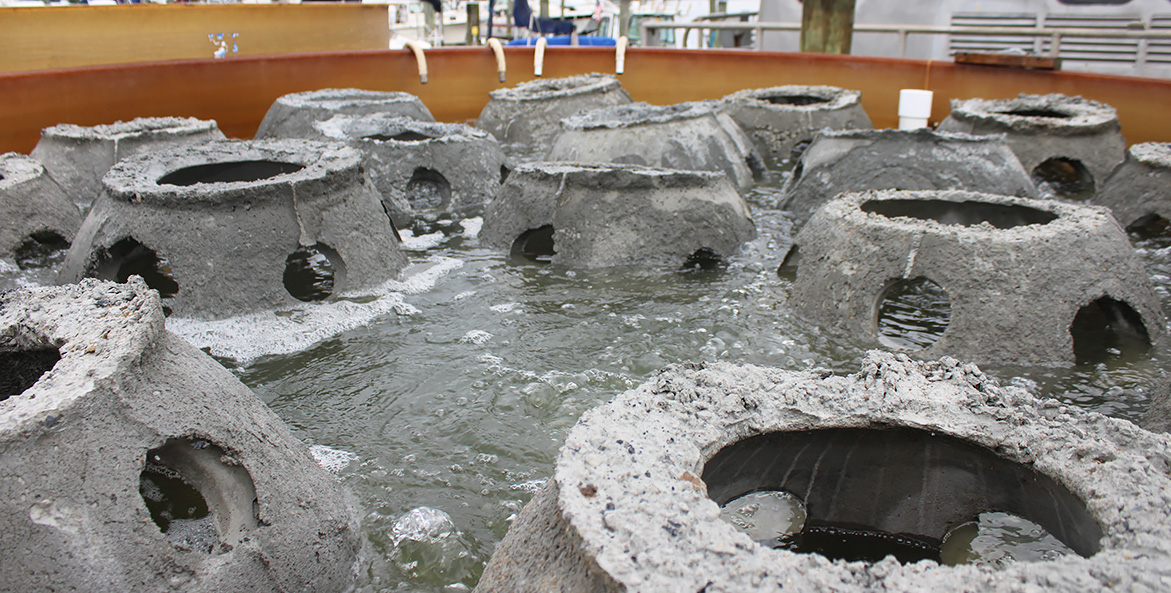
Reef balls soak in an oyster tank containing oyster larvae, or spat. The spat will attach to the reef balls, greatly improving their chances of survival once in the Bay.
Valerie Keefer/CBF Staff
Although they will remain microscopic to the eye, we know this process highly improves their chances of survival once in the Bay.
Planting Reef Balls into the St. Mary’s River
After roughly ten days, it was time to get the reef balls and oyster spat into the Bay. The St. Mary’s River oyster sanctuary is one of the 11 Bay tributaries targeted for large-scale restoration in the 2014 Chesapeake Bay Watershed Agreement—and is the only one on Maryland’s western shore.
After almost a full year of building reef balls, transferring them to our oyster restoration center, and setting them with spat, and four trips down to St. Mary’s on CBF’s oyster restoration vessel, the Patricia Campbell, the 600 reef balls have finally made their way into the Bay. CBF and CCA completed this effort in the summer of 2024, thanks to funding from the National Fish and Wildlife Federation’s Chesapeake Bay Stewardship Fund – Small Watershed Grant Program. Now, this habitat and its new oysters will support a thriving reef, and many other species, for generations to come.
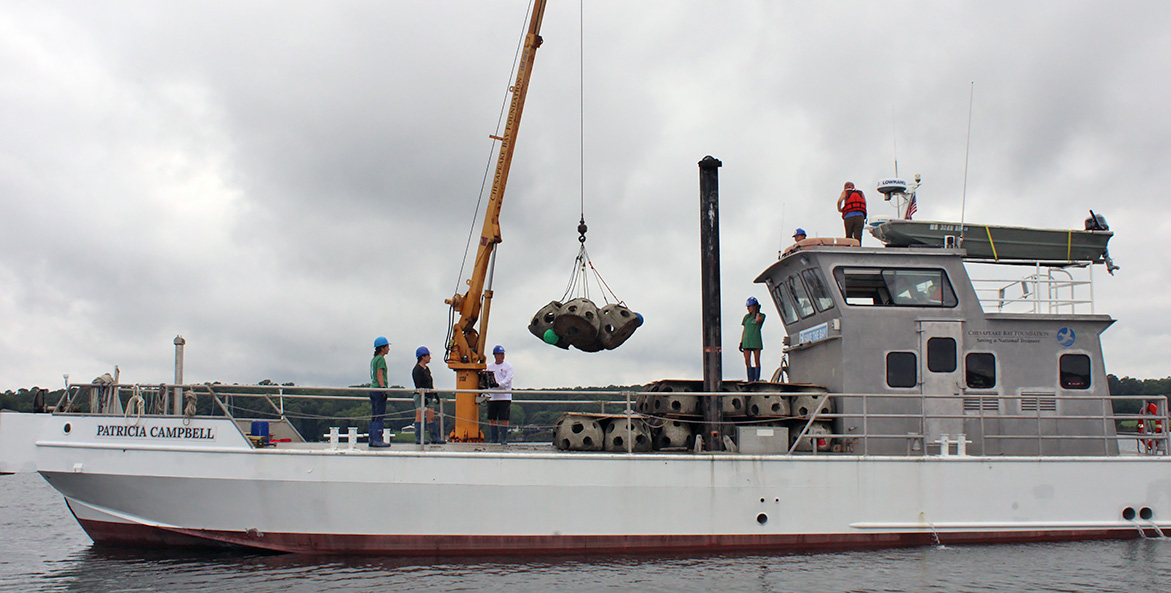
A total of 600 reef balls set with oyster spat were deposited into the St. Mary's River in southern Maryland in 2024.
Valerie Keefer/CBF Staff
Oyster sanctuaries like the one in St. Mary’s are protected and will not be harvested to eat. However, when these oysters grow up and reproduce, they won’t just seed oysters in the sanctuary, but also oysters downstream that can support a productive oyster harvest and local economy. The reef balls’ three-dimensional structure will create instant, valuable fish habitat that anglers can enjoy.
There are so many co-benefits to oyster restoration. From habitat, to economies, and water quality and health. So, while the title of this story was “All for an Oyster,” it really should be “All for the Bay” . . . because oysters are a critical solution for saving the Bay, and worth the resources and dedication to restore and protect them.

Maryland Communications & Media Relations Manager, CBF
[email protected]
443-482-2023

